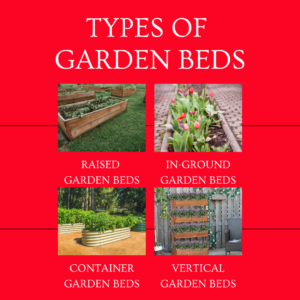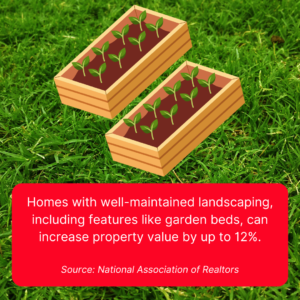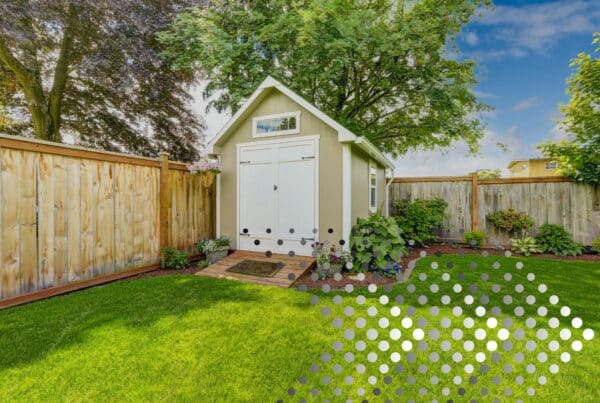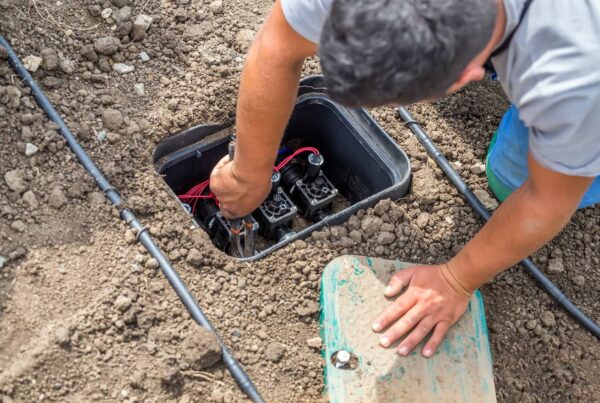
Garden beds do more than just hold your favorite vegetables and flowers. They shape your yard, impact your home’s value, and can even cause problems if installed poorly. As a home inspector, I’ve seen what works and what causes issues down the line. That’s why understanding the best garden beds is important, not only for your plants but also for your property’s long-term health.
Let’s break down what you need to know before you dig.
Why Garden Beds Matter to Homeowners
Garden beds bring beauty and order to outdoor spaces. They also serve as an easy way to grow fresh food, support pollinators, and manage weeds. But many homeowners don’t realize garden beds can affect your home’s foundation, drainage, and even pest control.
The best garden beds improve curb appeal and help sell homes faster. Buyers often notice how well the yard is maintained. A clean, organized garden space signals care and attention to detail, something every homeowner should take pride in.

Types of Garden Beds
There are many styles out there, but these are the most common types you’ll come across. Each has its strengths and things to watch out for.
Raised Garden Beds
Raised beds are built above ground and usually framed with wood, stone, or metal. They’re great for controlling soil quality and drainage.
Pros:
-
Provide easier access for planting and harvesting, especially for people with mobility issues or anyone who wants to avoid kneeling for long periods.
-
Reduce soil compaction and allow roots to grow freely without interruption, which leads to healthier and more productive plants.
-
Improve drainage in areas with heavy rainfall or clay soil, helping to prevent waterlogged roots and rot.
-
Help reduce pest problems like moles or rabbits when built high enough or with barriers.
Inspector insight: Don’t place raised beds against your home’s siding. Moisture can build up and lead to wood rot or pest activity. If you use untreated wood, inspect it yearly for rot.
In-Ground Garden Beds
These beds sit directly in the earth and blend naturally into the yard. They’re best for homes with good soil and lots of space.
Pros:
-
Offer an affordable and practical solution for homeowners who want a larger gardening area without the cost of frames or containers.
-
Take advantage of your existing soil ecosystem, which supports healthy microbial life and earthworms that improve plant health.
-
Easier to till and expand over time, giving you flexibility for future garden plans and larger planting spaces.
Watch out for: Overwatering near the house can lead to water seeping toward your foundation. Use edging to contain soil and keep mulch away from your walls.
Container Garden Beds
Container beds work well on patios, decks, or other hard surfaces. They’re portable and perfect for renters or small yards.
Pros:
-
Allow you to garden in small or paved spaces, like balconies or patios, without the need for digging into the ground.
-
Make it simple to move plants around to find the best sunlight or protect them from storms and frost.
-
Create an organized, tidy garden appearance that’s easy to maintain and fits in with modern outdoor decor.
Be cautious: Improper drainage can lead to water pooling near your home’s base. Always raise containers slightly to allow water to flow freely.
Vertical Garden Beds
A smart choice for tight spaces, vertical garden beds stack plants on a frame or wall.
Pros:
-
Save space by allowing you to grow upward rather than outward, which is perfect for urban homes or small backyards.
-
Add a modern, stylish element to fences or empty walls, transforming unused areas into green, living features.
-
Make plant maintenance easier because the raised levels reduce the need to bend over or kneel while gardening.
Inspector note: Avoid attaching vertical beds directly to your home. Water run-off can damage siding and promote mildew.
Choosing the Right Materials
The materials you choose can affect how long your garden beds last and how safe they are for your yard and your home. Some look good at first but deteriorate fast.
Here are the top material options for the best garden beds:
-
Cedar or Redwood: Naturally resistant to insects and rot, making them ideal for long-lasting raised beds. They have a pleasant appearance and release oils that deter pests without harming plants.
-
Pressure-Treated Wood: Known for its durability and resistance to moisture, this wood holds up well in wet conditions. However, be cautious about using it for food gardens unless it’s certified safe, as some treatments can leach chemicals.
-
Metal (Galvanized Steel): Offers a clean, modern look and exceptional durability. This material resists rot and pests and typically lasts for many years, though it can heat up in direct sun and may not suit delicate plants.
-
Composite: Made from a blend of recycled plastics and wood fibers, composite materials are rot-resistant, splinter-free, and environmentally friendly. They require very little maintenance and hold up well in all weather conditions.
-
Stone or Brick: Adds a timeless, natural look that blends beautifully with landscaping. These materials are permanent and sturdy, offering excellent insulation for plant roots and a clear upgrade in terms of visual appeal and home value.
Always choose materials that resist rot, don’t attract pests, and drain water efficiently. That’s key to keeping your garden healthy and your home protected.

Features to Look For
Before you build or buy, make sure your garden beds have the right features. These help you get better results while protecting your property.
-
Good Drainage: Ensures that excess water can escape easily, preventing waterlogged soil that can drown roots or cause mold. Proper drainage also reduces the risk of water moving toward your foundation.
-
Proper Height: A depth of 12 to 18 inches gives most plant roots plenty of room to grow while keeping the soil contained and accessible. Deeper beds may be needed for root crops or shrubs.
-
Safe Materials: Especially important when growing fruits, vegetables, or herbs, as harmful substances can leach into the soil and affect your harvest.
-
Sturdy Corners: Reinforced corners help the structure keep its shape over time. They prevent the sides from bowing outward under the weight of wet soil.
-
Ease of Access: Wide paths and reachable bed height make gardening more enjoyable and safer, especially for older adults or those with mobility challenges.
Choosing the best garden beds means considering more than just style. These details help avoid headaches later.
Where to Place Your Garden Beds
Placement can make or break your garden. It also plays a big role in how your home handles water and pests.
Here’s what to keep in mind:
-
Keep garden beds at least 6 to 12 inches away from the home’s exterior to reduce the risk of moisture building up near siding or the foundation.
-
Don’t block vents, windows, or utility access points with beds or tall plants, as this can interfere with airflow, inspections, and repairs.
-
Avoid placing them on slopes that drain toward your foundation, since excess water runoff can cause soil erosion and structural damage over time.
-
Choose sunny spots that get at least 6 hours of direct light per day, which most vegetables and flowers need for healthy growth.
-
Watch where your roofline drips. Avoid placing beds under heavy runoff unless gutters are installed to redirect the water safely.
A good location supports your plants while keeping your house safe. Poor placement can lead to wood damage, mold, and even termite issues. The best garden beds work with your yard’s flow, not against it.
Maintenance Tips for Garden Beds
Once installed, garden beds need regular care. You can keep them looking good and lasting longer with just a few seasonal steps.
Spring:
-
Check for signs of rot, warping, or rust. Make repairs early to prevent spreading damage and protect your investment.
-
Add compost or fresh topsoil to replenish nutrients lost over the winter, giving your plants a strong start.
-
Inspect for early signs of pest activity like ants or termites, especially in wooden beds.
Summer:
-
Apply mulch to retain moisture, regulate soil temperature, and discourage weed growth.
-
Watch for overwatering, particularly in beds placed near the house, to avoid excess moisture around your foundation.
-
Prune plants regularly to improve airflow and reduce the risk of fungus or mold growth.
Fall:
-
Clear out spent plants and weeds, which can harbor pests and diseases over winter.
-
Add a layer of straw or leaf mulch to protect soil from erosion and maintain structure.
-
Drain containers and move fragile beds out of harsh weather zones before frost sets in.
Winter:
-
Store or cover portable containers to protect them from cracking in freezing temperatures.
-
Plan upgrades or changes for spring to maximize next season’s garden potential and make replacements as needed.
A little attention goes a long way. Even the best garden beds need regular check-ups to stay in good shape.
Final Thoughts
Garden beds are more than just pretty planters. When done right, they add beauty, value, and function to your home. But if installed or maintained poorly, they can cause expensive problems. Choosing the best garden beds means thinking about materials, placement, drainage, and long-term care.
If you’re planning new garden beds or wondering how your current ones affect your home’s exterior, we can help. Our home inspection team looks at landscaping, drainage, and exterior conditions to ensure your garden works with your home, not against it.
Ready to protect your investment from the ground up? Schedule a home inspection with us today and make sure your garden beds are doing your home more good than harm



